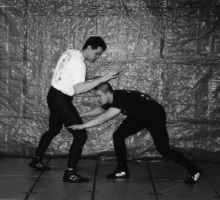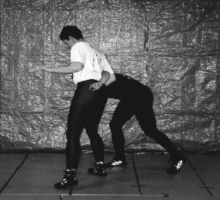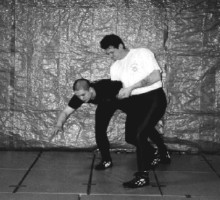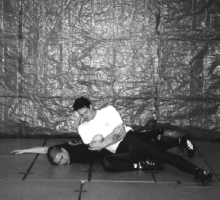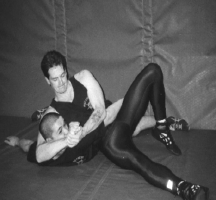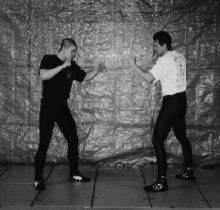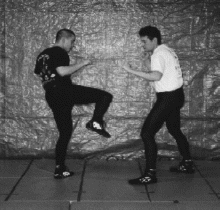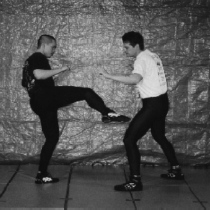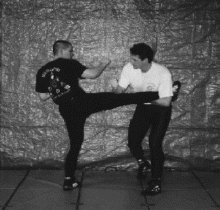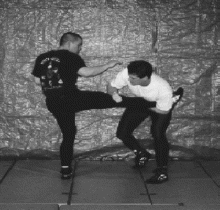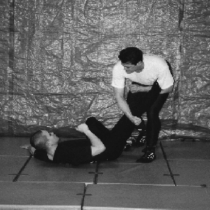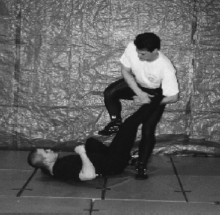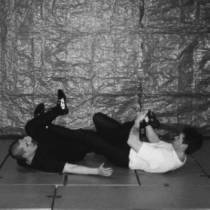Искусство рестлинга в качестве спорта и метода самозащиты уходит своими корнями в историю глубже, чем какой-либо другой вид рукопашного боя. Его существование прослеживается с 3400 до нашей эры. Тогда рестлинг был самым популярным времяпрепровождением у египтян. Изображенные фигуры рестлеров на фотографиях артифактов снизу до сих пор можно увидеть на стенах египетской гробницы Beni-Hasan, а барельефы на стенах гробницы Vizier Ptahhotpe в Саккаре (Saqqara). Углубленные исследования показали, что на тех самых стенах показаны приемы, используемые в рестлинге по сей день. Эти рисунки были сделаны более 2300 до нашей эры.
Рестлинг изначально не был зрительным спортом, как это описывается в Олимпии. Он был более основан на условных движениях, иммитирующих боевые искусства, усиляющих навыки выживания. Стычки между цивилизациями, племенами и империями не были редкостью, особенно во время военных действий. Признаки военизированных видов спорта играли важную роль для правителей и солдат древнего мира. Так вот тот самый рестлинг, отображенный на стенах Египта вперемешку с военными действиями подсказывают, что рестлинг был важной частью солдатских тренеровок с самого начала.
(слева) рисунки рестлинга на стенах гробницы Beni-Hansan в Египте, 2000 до нашей эры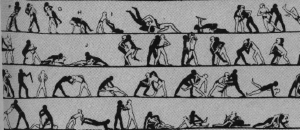
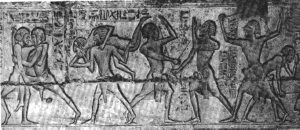
Как и всякое средство выживания для человечества, рестлинг стал своего рода символическим сообщением. Эти сообщения явно переданы на древних артифактах, как, например, металлисческих монетах и керамических вазах из Греции. Эти пиктографические артифакты показывают рестлинг не только как свидетельсво человеческой мощи, но и форму человеческой отваги. Этот текст, вероятно, показывает, что сила одного человека направленная против жизненных трудностей так же важна, как и сила всей нации.
О рестлинге нам расскажут и многие другие древнии иконы. Платон, который в юношестве был членом Палестры (греческий гимнастический зал), повествует о рестлинге через свои философии. Хотя, забавно то, что сам Платон предпочитал рукопашный бой всем другим видам боя.
Но если уж рестлинг был символическим посланием о силе, мог ли он рассматриваться как философия или способ защиты? Возможно оно и так, демонстрации такого типа веками упоминались в библейских историях. Пророки и ангелы, которые сражались с чудовищем, показывали бесстрашную силу, которая поднимала человеческий дух. В 32 главе Книги Бытия сказано, что Яков был оставлен на растерзание чудищам и людям до заката солнца.
With the varieties of wrestling that exist through different cultures and civilizations each have different standards, regulations and training methods that provide guidelines for its method wrestling. These are determined by the social customs on which the wrestling system originated from. We know six centuries before Christ the Greeks established not only their architectural civilization but also wrestling. First introduced to the Olympia Games in 704 BC wrestling at this time was dominated by the Spartans a breed well known for there military tactics. Wrestling in the 9th BC had reached the Roman Empire by the Etruscans and had slowly evolved into a more entertaining and exciting sport. Pure Greek wrestling in the 3rd BC was recorded as static and unexciting for Olympia spectators, this was from the continues hours of wrestling upon the ground with little movement from the contestants. This change when the Roman Empire concord Greece in 2 BC. Roman paramilitary tactics such as upright takedowns while equipped with armor provided the Romans an effective defense against their adversary's among the battlefields. Merging of the Greek and Roman wrestling methods sculpted the name Greco- Roman style which provided efficient standing throws with exceptional ground skills.
Other exciting events that had become part of Olympia history were the feared Pankrantion participants of the games. First introduced in the 33rd Olympia 648 BC the art of Pankrantion combined skills of formal boxing, kicking tactics and wrestling techniques to the arena. Participants of Pankrantion bound their fist with hemp rope and imbedded spike like objects within the hemp itself above the knuckles. This added protection while providing a lethal weapon to the contestants fist. The word "Cactus" today derived from the Greek word Caetus meaning (spike). Some events of this kind at Olympia were known as "Cactus fighting" or fighting with spiked hands.
(слева) Greek drawings of hemp rope tied formally around the fist and forearms of Caetus contestants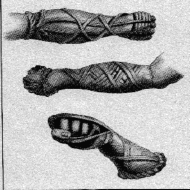
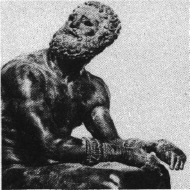
These weapons of destruction which formed to the hands of the fighter caused incredible damage to many of the contestants. Death was not uncommon at this past time Olympia event. As contestants of Olympia pushed the limits of such a sport so did the spectators, and finally man would no longer just wrestle man but more animalistic opponents, the lions of Africa. This form of an opponent for man was truly greater and man would rarely concord such a beast.
But for Olympia spectators there was a fine line between winning and losing, victory was often found in ones courage rather than in the triumphant over an opponent. At Olympia it was often better to die with great courage than to surrender to ones limits.
Other ancient forms of European wrestling can be found in the British Isles dating back as far as 1829 BC. Wrestling forms known as Lancashire, Cumberland, Cornwall and westmorland were commonly known as "Strong Arm Fighting" Events of this wrestling were named generally named after their founded region and were commonly practice in church yards. Jacket with heavy collars and waistbands were worn to grab hold of one another. Men of Cornwell and Devonshire England were exceptional known for their throws and techniques. Famous leaders such as Henry VIII of England and Abraham Lincoln of the USA were great practitioners of Cornish and Catch as Catch Can wrestling from Lancashire.
Other varieties of wrestling found in Europe include Glima from Iceland and Switzerland Schwingen wrestling. Both of these methods are linked to the Viking Era and have a history of four thousand years. Wrestling among the Scottish was famous not only on the battlefield against there opponents but also against there opponents in the famous Highland games which still exists today.
One of the most religion and ancient forms of wrestling that exist is Indian wrestling from India. Traditional Indian wrestling has been around since 11 AD and is integrated with the religion of Hinduism. Indian wrestling known as Pahalwani or Mallavidya is a form exercise that defines the essence of wrestling and man. Through the eyes of Indian wrestling one achieves not only self discipline through physical fitness but achieves identity and purity of the body, mind and spirit. Training resides at the Akharas (temples, gyms). When one enters the temple he leaves behind him the civilization that he is part of and enters a world of tranquility and acknowledgment. Akharas are equipped with fine grit dirt floors to bring one closer to natural elements of the earth. Dirt floors that cover the training have been shifted and saturated with essential oils to supple the skin of the wrestler when he is wrestling. The oils also keep the dirt clean and compressed for body's to tumble upon. Natural light and fresh air impact the training area as well to keep it in harmony with the surrounding atmosphere. Strength training is performed religiously. Indian wrestler are well known for there flexibility and power. This is achieve through several types of exercises done with ones own body weight. Performing exercises such as Yogi (posture stretches), Bethak (in place squats), Dand (push ups), Jori (swinging weighted wooden clubs) Gada (swinging weighted ball and mace) and body massages gives the wrestler a complete regiment.
A well known champion from India in the 1930's known as "The Great Gama" performed several thousand of Bethak (squats) daily for routine training. "Gama" like many Indian champions are noted for there size, strength and knowledge. Other forms of wrestling that have appeared out of India is Vajra-Musti wrestling. Contestants face each other with claw daggers in one hand while using wrestling techniques. This form of wrestling was banned because of frequent fatal wounds to the opponent. It can still be seen today at fairs and gatherings for demonstration purposes.
Africa and its naboring countries of the north such as Turkey and Iran have also played a major roll in wrestling. Turkish style wrestling called Kuresh and Iran style wrestling Paklewani have been into existing for more than 1000 years. Introduced to them by the Africa's culture, Middle Eastern countries and parts of Europe the Turkish wrestle has unique features to its style. Traditional Kuresh wrestlers drench their bodies in olive oil while wearing knee high leather pants. The oil makes their skin supple and making it difficult to hold on to the opponents body while wrestling. This puts great demand not only on the wrestlers techniques but on maintaining a secure hold and control over the opponents slippery limbs. The leather pants give protection to the wrestlers legs for Kuresh wrestling is known to wrestle for several hours at a time while upon grassy fields.
Famously known for their martial art forms Asia's history of wrestling such as Japanese Sumo wrestling dates back early as 23 BC in the 7th year of Suinin Emperor. China's wrestling styles like Choa Shua, Sanda, Chin-Na are a direct link to Tibetan and Mogul empires. More famous grappling forms like Jujitsu and Judo were born in Japan around 1600 AD. Formally trained by the Samurai class it was first known as Kumiuchi (grasping the Samurai empty hand). Judo founded in 1850 a later relative of Jujitsu is similar in every fashion and has been part of the Olympic games since the early 1900's Both Jujitsu and Judo weir heavy jackets called "Gi's". This type of training teaches one to secure a firm grip in numerous positions to permit submission locks on the opponent. Over several hundred forms of Jujitsu exists today with just a few Judo forms existing.
With many varies forms of wrestling that exist throughout the world they all have one basic element in common, the skill of close quarter combat. The engagement of two individuals locking limbs and body's may seem primitive but wrestling displays a high degree of skill in the science and the knowledge of leverage and fulcrum. A wrestler must learn to attack and counter attack in varies position that are constantly changing direction. This performance of strength and athleticism is dynamic in coupling ones agility and patience.
In the early part of this century, particularly in the U.S. the sport of wrestling bored some public audiences because of its strategy of patience. Submission wrestlers may have found themselves in 30 minute to 3 hour bouts with little signs of movement. From the spectator viewpoint this had become a unexciting form of entertainment and at this point in time English boxing was becoming the next favorite past time competitive sporting event.
One of the greatest wrestlers of this century is the legendary "Great Karl Gotch".Karl Gotch is famed for his wrestling experiences and extraordinary submission locks. Born in Germany in 1924, Karl Gotch started wrestling at the age of 9 years of age. Through rigorous training and winning countless matches Karl Gotch would be known by his opponents as a Shooter ,a slang word known in the early part of the century as a wrestler who wins by submission locks. Known to the Japanese wrestling community as the "Wrestling God", Karl Gotch is known to possess over 1000 different submission locks in his repertoire. With over 65 years of wrestling history behind him, his magnificent skill and knowledge turns the sport of wrestling into a highly technical science.
Below: An escape (Turnout) from the double leg takedown followed by (Head & arm) Submission lock. As the attacker descends into the takedown the defender spins to the outside simultaneous hooking the opponents arm. The defender continues to drop his weight to the mat in one motion gaining position for the lock.